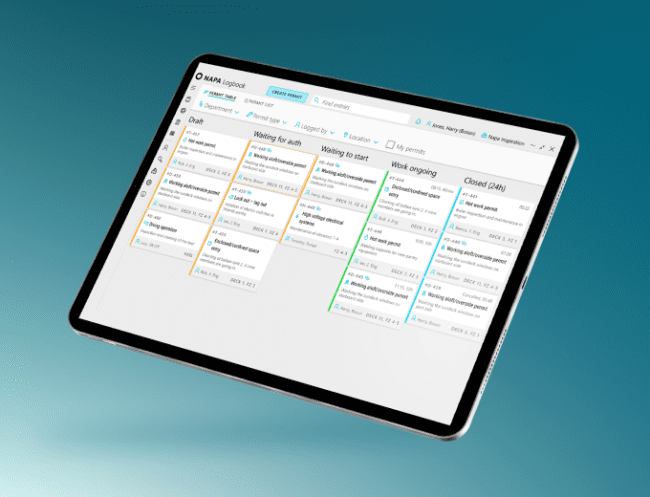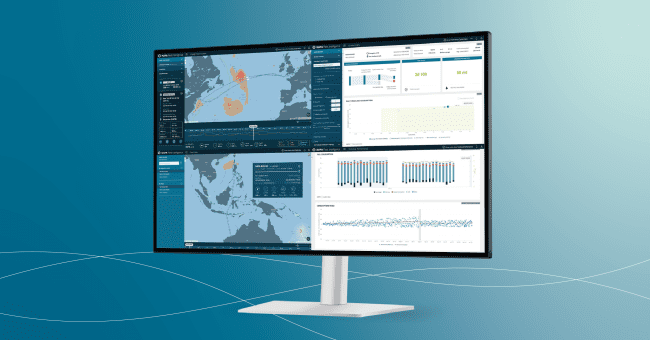Emissions and EU-MRV – incentives, transparency, and better data
By Risto Kariranta, Shipping Solutions, NAPA Ltd.
The European Commission’s (EC) decision to make public data relating to the carbon emission performance of individual vessels has led to mixed reactions throughout the shipping industry. It is not the premise of the regulation which has resulted in scrutiny (the EC has collected data under its monitoring reporting and verification scheme within the EU since 2018) but the legitimacy of such data in representing a vessel’s true efficiency.
According to TradeWinds article, shipowners’ concern stems from the perceived simplicity of the data; that the data fails to acknowledge additional factors affecting efficiency such as cargo and weather conditions. However, the EC believes that enabling access to the data will reduce carbon pollution through influencing the industry to increase ship efficiency and develop more environmentally compliant vessels.
Better Voyage Data
It was Roar Adland, professor at Norwegian School of Economics, deliberating the legitimacy of the EC’s proposal which led me to consider my own perspective in more detail. Roar noted that omitting factors from the data, such as cargo, results in overly simplistic, and therefore misleading, data; the observed fuel consumption and true energy efficiency of a vessel being an unilinear relationship. With the EC’s proposal to add cargo information still failing to take into account speed and prevailing weather conditions Roar posed the question: Is it justifiable for consumers to perceive ships with higher emissions as inherently bad without fully understanding the reasoning behind the data?
Instead, Dr. Adland believes the answer to reducing emissions could instead be found in smaller collective industry change. For example, applying a first-come-first serve principle in ports, aligning demurrage rates and encouraging charterers to work with owners to get emissions and costs down would be a valuable means of influencing the industry.
EU-MRV and Aligned Incentives
These suggestions recognise that it is simplistic to think emissions reductions can be achieved solely through publicity alone; charterers selecting the most fuel-efficient ships is just one of the many actions and incentives required to cut the shipping industries’ carbon emissions. However, the EC’s MRV is one of the only forms of emissions measurement that is currently globally applicable – and, to my mind, only the first necessary step of many that need to be taken. As an industry, we operate in an environment where incentives are often misaligned, with both financial and environmental consequences. Arguably, in the simplicity of EU-MRV, there lies opportunity. Opportunity to facilitate, encourage and build emission-incentivised innovations and solutions around optimising vessel efficiency.
My hope and expectation is that public access to ship emissions data will lead to an improvement in the way ship owners and charterers approach emissions. EU MRV is also an enabler for a emission tax which, is one promising tool to reduce the emissions, given that it would be global. The benefit of the tax is that it simply affects the harmful emissions but does not restrict in any ways the means how to achieve this goal: such mechanism incentivises all the ways to reduce those including also those mentioned and therefore leaves the ”market” free for the best inventions and conventions to handle that.
A tax is not the only incentive however, and going one step further, an emission quota trading scheme could be a more effective driver for the reduction than a fixed tax. As prices of quotas increase and as common market areas expand, for example in the Nordic-Baltic region, this mechanism has worked well in electricity production: disincentivising the use of highly polluting power plants.
Data is effective in that it enables much smarter incentives. It allows us to consider how much ships are carrying and whether they are performing optimally, whilst also factoring in considerations such as weather to ensure performance is compared on a level playing field.
To drive the kind of systemic change that shipping needs to achieve to reduce its emissions sustainably will however require levels of transparency far beyond what shipping is currently used to.
Through debating and collaborating on these initiatives, we encourage questions which in turn lead to the most effective solutions. As evidenced with technologies such as NAPA Fleet Intelligence, which currently combines data on weather, fuel consumption and cargo to increase vessel efficiency, the question is as much about digital solutions as whether the industry is ready to embrace change when it comes to data transparency and collaboration.
Find out more about NAPA’s solutions for voyage reporting and optimisation here


